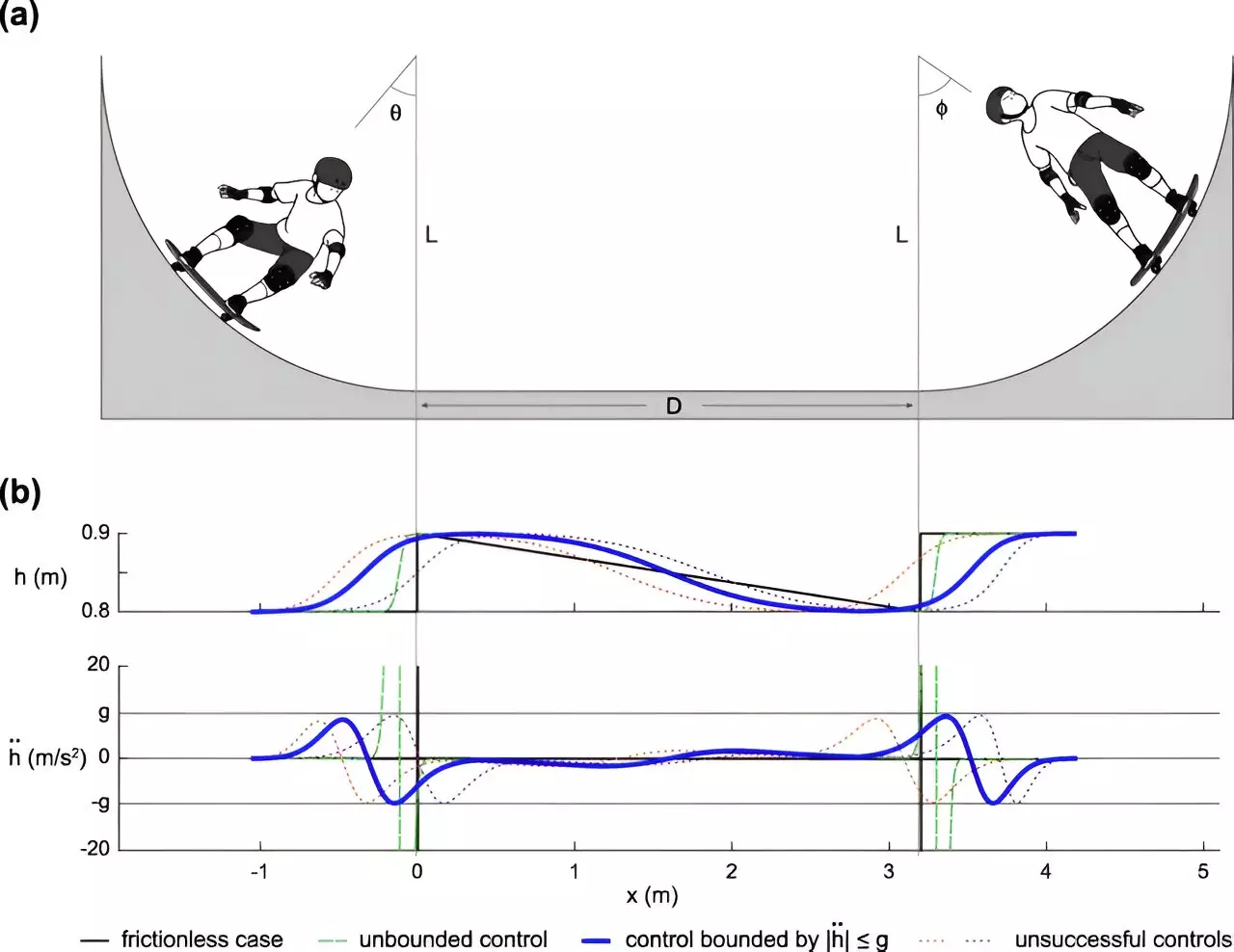The world of skateboarding, particularly when it comes to executing maneuvers on a half-pipe, is an exhilarating display of physics in motion. A group of engineers and mathematicians from ETH Zürich, collaborating with research institutions like The Institute of Statistical Mathematics and ATR Institute International, have delved into the physics underpinning the art of skating. Their groundbreaking study, published in the journal *Physical Review Research*, focuses on modeling the intricate dynamics involved when skateboarders utilize a technique known as ‘pumping’ to gain momentum, paralleling the motion dynamics observed in traditional swinging.
A half-pipe is not merely an apparatus for the action sports enthusiast; it is a carefully designed structure that invites both gravity and skill to interact. Formed by two inclined planes meeting at a valley, the half-pipe resembles a horizontal pipe sliced in two, presenting skaters with the opportunity to ascend and descend rapidly. When skaters engage with this form, the basic movements involve rolling from one side, transitioning through the valley, and climbing up the opposite incline. This motion presents a fascinating study in kinetic and potential energy transformations, as skaters alternate between gravitational pull and the propulsion produced by their body movements.
To maintain momentum while performing tricks on the half-pipe, skateboarders employ a technique known as pumping. This complex movement requires the skater to crouch while descending into the valley and then thrust upwards as they navigate the curve leading back up. This posture not only conserves energy but maximizes the force exerted on the skateboard to enhance speed, reminiscent of children who push off to continue swinging. The ability to manipulate body mass relative to positions on the half-pipe, and to coordinate the angle of the board during these maneuvers creates a unique set of challenges and opportunities for riders.
Fascinatingly, the researchers drew analogies between the mechanics of skateboarding and the physics associated with swinging. By starting their modeling with well-known dynamics of swings and pendulums, the team utilized existing concepts to build a foundation for understanding rider movement. They meticulously analyzed videos of skateboarders in action, identifying unique attributes that affect how they perform on the half-pipe. This melding of theory with visual evidence allowed the researchers to create a more robust model that accurately depicted the motion of skateboarders.
After constructing their model, the research team concentrated on identifying optimal pumping techniques to enhance momentum. Interestingly, the outcomes suggested methods that would be impractical in real-world applications, such as dramatically launching skaters off the pipe. The goals were not simply to simulate but to unveil the potential limits of motion on a half-pipe. The research highlighted the delicate balance between physics and practice, revealing that while theoretical models can push the boundaries of what is understood, they must also align with the practical constraints of human capacity and physical environment.
Future Directions: Robotics and Balance Learning
In concluding their research, the team proposed an unconventional yet intriguing application of their findings: using the developed model as a basis for robots to learn balance and movement on uneven terrains. The principles that govern pumping and consistent momentum are fundamentally applicable across various forms of locomotion, suggesting that advanced robots could replicate these dynamics to enhance their efficiency and stability in complex environments. This crossover between sports physics and robotics opens new avenues for technological innovation that could integrate human-like agility into robotic systems.
This research at the intersection of mathematics, engineering, and action sports illustrates the depth and versatility of physics in understanding human motion. By analyzing how skateboarders interact with the half-pipe through a framework that blends theory with real-world observation, ETH Zürich’s team has not only illuminated the unique dynamics of skateboarding but has also paved the way for new applications in fields like robotics. As skateboarding continues to evolve as both a sport and an art form, the ongoing exploration of its underlying physics will surely foster further innovation and inspiration.

